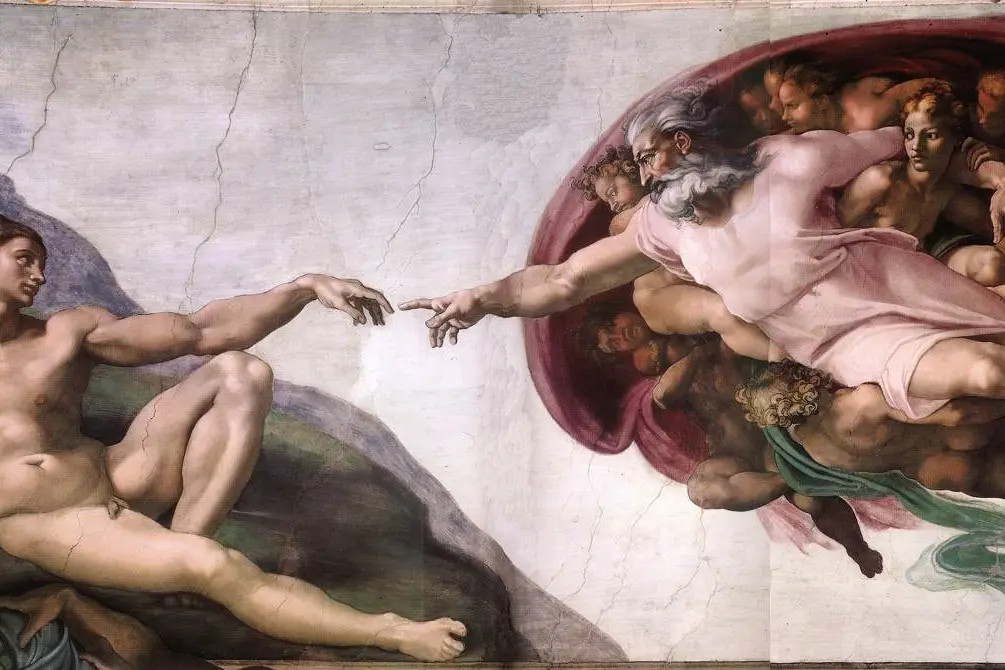What if it all depended on touch?
In Maurette's essay "The Forgotten Sense" a reflection on the human essence as something that is not inside us, but on the epidermisPer restare aggiornato entra nel nostro canale Whatsapp
In the Sistine Chapel, Michelangelo, wanting to show the very moment of the creation of the human being, chose to depict Adam in front of God. The two hold out their hands and their fingers almost touch, as if the essence of life could be summed up in that simple touch, only hinted at, only grazed. Michelangelo, in his greatness as an artist, surprised his contemporaries with this interpretation of the divine Creation. Everyone expected that a light would strike Adam or that the first man would be surrounded by splendor. Instead, it seems that Michelangelo wanted to evoke the fundamental message left to us by the Argentine philosopher Pablo Maurette in his short essay dedicated to touch, “The Forgotten Sense” (il Saggiatore, 2025, pp. 214, also e-book): «Perhaps the old Western belief that locates the essence of what we are inside the body, inaccessible to the senses, is false. Perhaps our nature is found precisely on the surface. On the skin».
An original perspective, just as original is Maurette's essay. The forgotten sense is a cultural history of touch, the sense that has shaped art, philosophy and literature, but also cinema. A curious and surprising journey into our roots to understand how our imagination is made not only of looks, sounds, smells and tastes, but above all of what has managed to graze our surface until it touched us deeply. How many times do we remember the warmth of a caress even from a distant time? How can we forget the first time our lips grazed those of others, driven by love and desire?
Yet, defining what touch is is both immediate and elusive. We immediately think of the fingertips, but our entire body surface is a tactile site. Aristotle had already asked himself whether it was a single sense or many, being spread throughout the body. It was Lucretius, however, in his work dedicated to the natural world, De rerum natura, who argued that touch governs nature, so much so that the other senses can be considered its variants. From here begins Pablo Maurette's exploration of the many meanings that writers, artists, poets, intellectuals and ordinary people have given to touch and what they have understood through it: from the Iliad, which from its metrics - the dactyl hexameter - underlines the link between the hand and the word, to Moby Dick, with the many passages dedicated precisely to physical sensations; from the lingchi of Chinese tradition – the capital punishment that annihilated the person by transforming him into a shapeless mass of flesh –, to diseases such as syphilis or the plague, in which the relationship between contact and contagion proved crucial; up to the many pages written on the kiss, the highest expression of touch and the threshold between the material and the spiritual.
The forgotten sense is a work that makes us reconsider the human essence as something that is not inside us, but on the epidermis. Touch, after all, is the only sense that allows us to know the world and our individuality together: because touching is also being touched, and feeling something is always also feeling ourselves.
